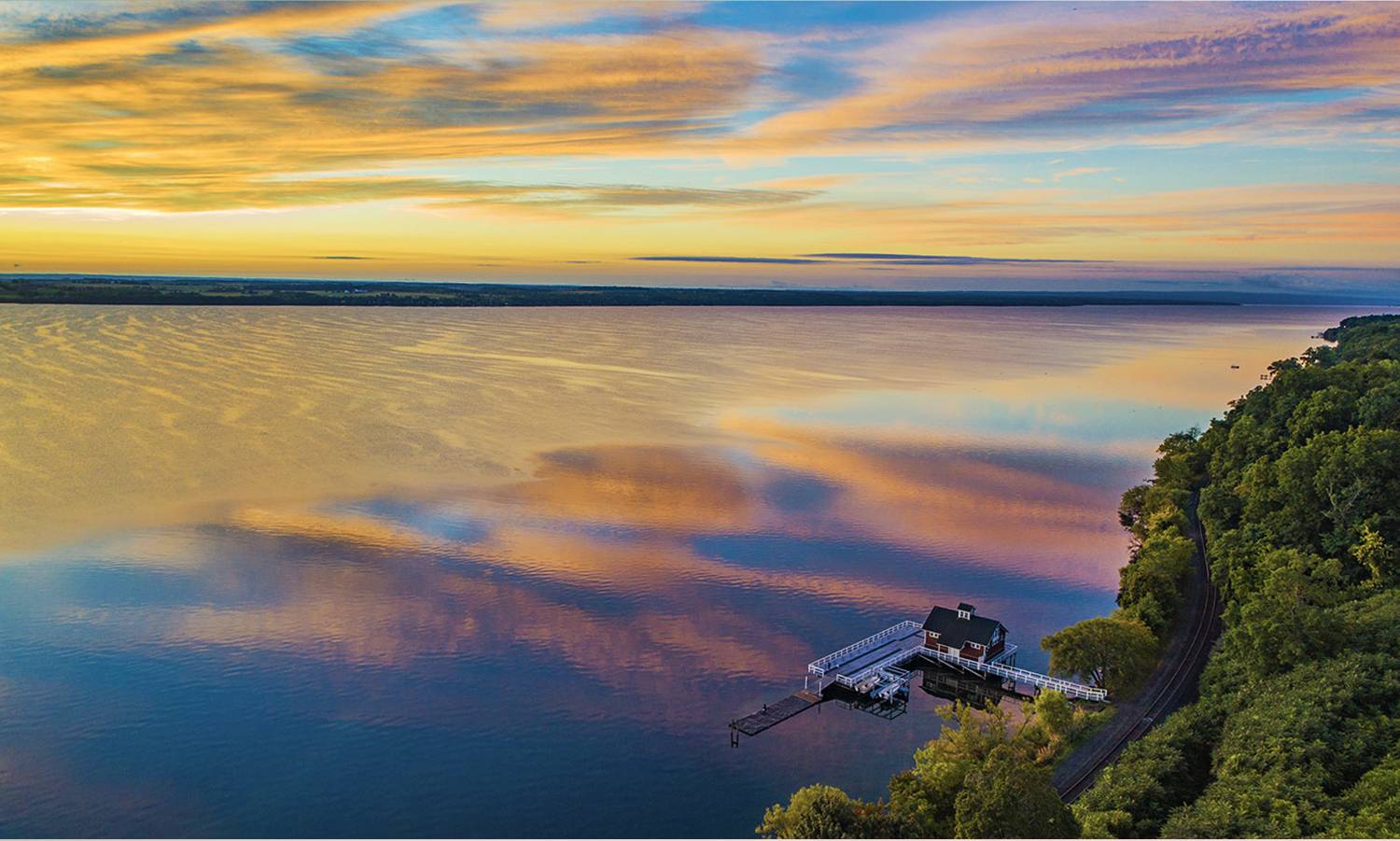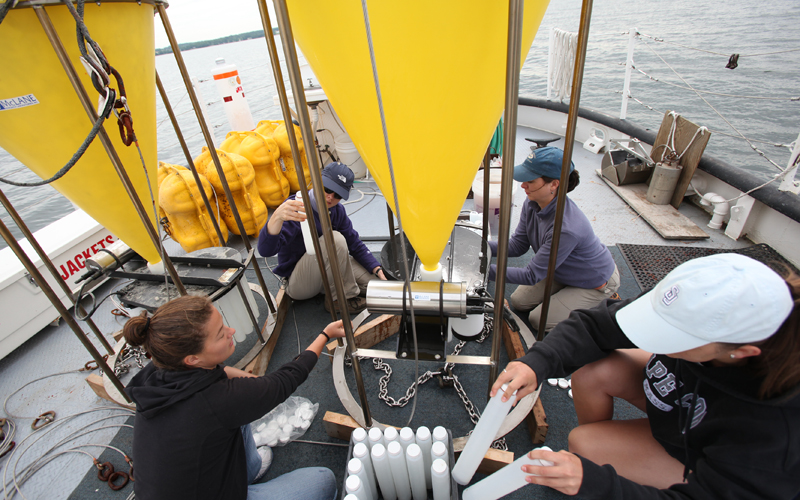
Tara Curtin

Tara M CurtinAssociate Professor of Geoscience
Joined faculty in 2001
Ph.D., University of Arizona, Tucson, AZ
M.S., University of Illinois at Urbana-Champaign
A.B., Colgate University, Honors in Geology, cum laude
Contact Information
Scholarly Interest
Using layered lake deposits to infer seasonal (or episodic) climate change in Seneca Lake and other modern lakes.
Courses Taught
FSEM 034 The Analytical Methods of Sherlock Holmes (occasionally)
In this course, the novels and short stories written by Sir Arthur Conan Doyle are used as a guide for the development of scientific skills of observation, hypothesis testing, deduction, and reporting. Students examine the detective Sherlock Holmes, who was really a scientist at heart, and read several Sherlock Holmes stories to understand and reproduce his methodology. Students analyze a variety of Doyle’s detective stories, take some local field trips to practice powers of observation in natural settings, reproduce several of Holmes’ analytical techniques as group experiments in geology and chemistry labs on campus, and visit a crime lab. Holmes’ analytical methods and Watson’s flair for reporting are used as models for writing. By the end of the semester, students write their own Sherlock Holmes story in Doyle’s style illustrating the scientific method.
FSEM 144 Parched: The Past, Present and Future of Water (occasionally)
Water is a necessity of life. It is nature's ultimate paradox: the softest natural 'element' in both classical and eastern thought and yet one capable of overcoming all the others. Water is an agent of purification, healing, nourishment, and mechanical power. It is also an agent of destruction and devastation. Water is the most plentiful natural resource on Earth and yet a resource that increasingly proves unobtainable when humans seek and need it most. In the midst of global climate change, environmental crises for water resources and the political debates over water, we have come to the realization of our complete dependence on water. Students will examine and draw conclusions about the nature of humankind's encounter with water using maps, biographies, autobiographies, poems, movies, novels, and scholarly articles. Through lectures, class discussion, debates, short essays, blogging, and research papers, this course will provide students with the tools to explore how the environment naturally produces safe, clean drinking water; how humans obtain and use these water resources; water quality and water pollution; water treatment processes; energy generation; and how we can sustain our water resources in perpetuity. This course is taught as a learning community. Students also enroll in GEO 186 Introduction to Hydrogeology.
GEO 140 Environmental Geology (offered occasionally)
Understanding the risks associated with natural hazards such as earthquakes, volcanoes, landslides, droughts and floods, and conversely sustainably managing important resources such as energy, minerals, wetlands, coastal areas and fresh water supplies demands an understanding of fundamental geologic principles, materials and processes.
GEO 186 Introduction to Hydrogeology (every fall)
Water and water resources are critical issues for the sustenance of every society. This course is an introduction to hydrogeology and explores water in the atmosphere, lakes, oceans, and other reservoirs found on land and the movement among reservoirs. Discussion of the role of water in natural systems results in an exploration of (1) atmospheric moisture; (2) floods and stream processes; (3) the physical, chemical, and ecological characteristics of lakes and oceans; (4) aquifers and groundwater processes; and (5) wetlands. We will use quantitative reasoning to examine the characteristics and importance of water across environmental and geophysical sciences. Prerequisite: Math 100 or a score of 20 or better on the math placement test. This course is a prerequisite for many geoscience courses.
GEO 220 Geomorphology (alternate fall terms)
We live on the thin surface of the earth, which is the interface between the lithosphere, biosphere, hydrosphere, and atmosphere. Geomorphology is the study of how these “spheres” interact and form the landscapes we see around us. Through both descriptive and quantitative analysis, we will assess the scales and rates at which surface processes occur. Exploring the connection between modern processes and modern deposits is essential to deciphering the geologic record. We will explore the link between process, landform and deposit. We will evaluate fluvial, glacial, slope, eolian, weathering, and karst processes and the landforms that they produce and the deposits that are left behind. An understanding of surficial processes is critical to understanding the interaction of humans and their environment. Note: Weekend field trips are required. Prerequisites: GEO 184 and GEO 186.
GEO 270 Paleoclimatology (spring terms)
Paleoclimatology is the study of climate prior to the period of instrumentation. Understanding how and why climate changes is important for interpreting the geologic record and evaluating contemporary climate change. After an overview of Earth’s modern ocean-atmosphere system and energy balance is presented, dating methods and techniques for reconstructing past climates are discussed. Field and lab projects may include working with existing paleoclimate datasets in addition to collecting and interpreting archives of climate change such as tree rings, bog and lake cores, and speleothems from the local area. Note: There are required weekend field trips. Prerequisites: GEO 184 and GEO 186.
GEO 299 Geoscience Field Studies
The course is designed to introduce you to field-based scientific investigations in an intensive two-week course. We will conduct several mapping and data collection projects that will provide you experience with field observations in areas of geology, meteorology, and climatology. Students completing the course receive one full course credit. The course is offered as credit/no credit and can be counted toward a Geoscience major or minor. Prerequisites: Application, reference letters, and a B- or better in GEO 182, 184, or 186.
GEO 320 Sediments and Sedimentary Rocks (alternate fall terms)
Sediments and sedimentary rocks are the most common of the geologic materials on the Earth’s surface. Found in them are many of the raw materials used in our industrial society, the record of life in the past and the record of ancient environmental change. Laboratories involve the description, classification, correlation, and interpretation of sediments and sedimentary rocks. Note: There are required weekend field trips. Prerequisite: GEO 184.
PROFESSIONAL AFFILIATIONS
American Geophysical Union
Geological Association of America
Society of Sedimentary Geologists (SEPM)
International Association of Sedimentologists
National Association of Geology Teachers
Council on Undergraduate Research

